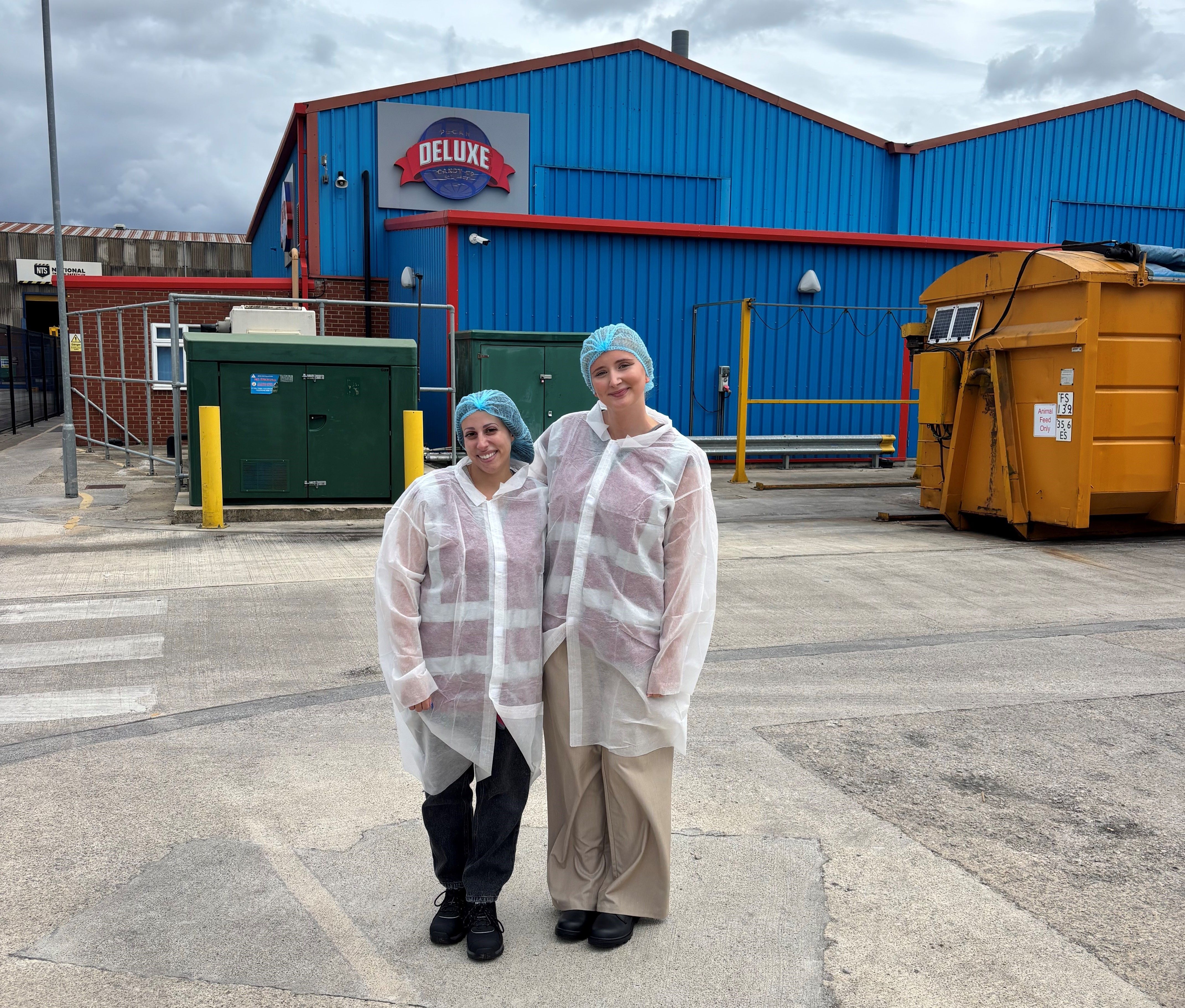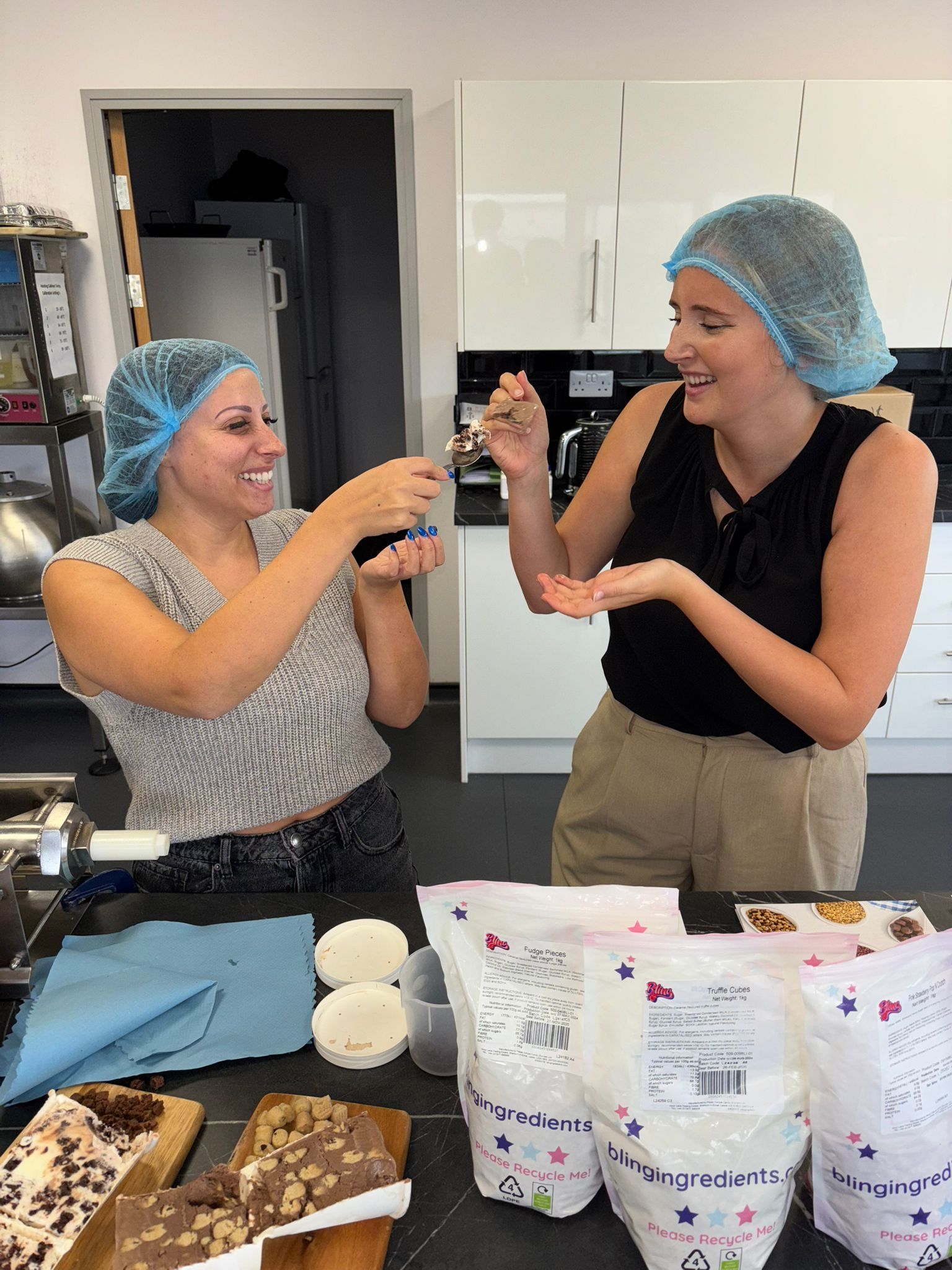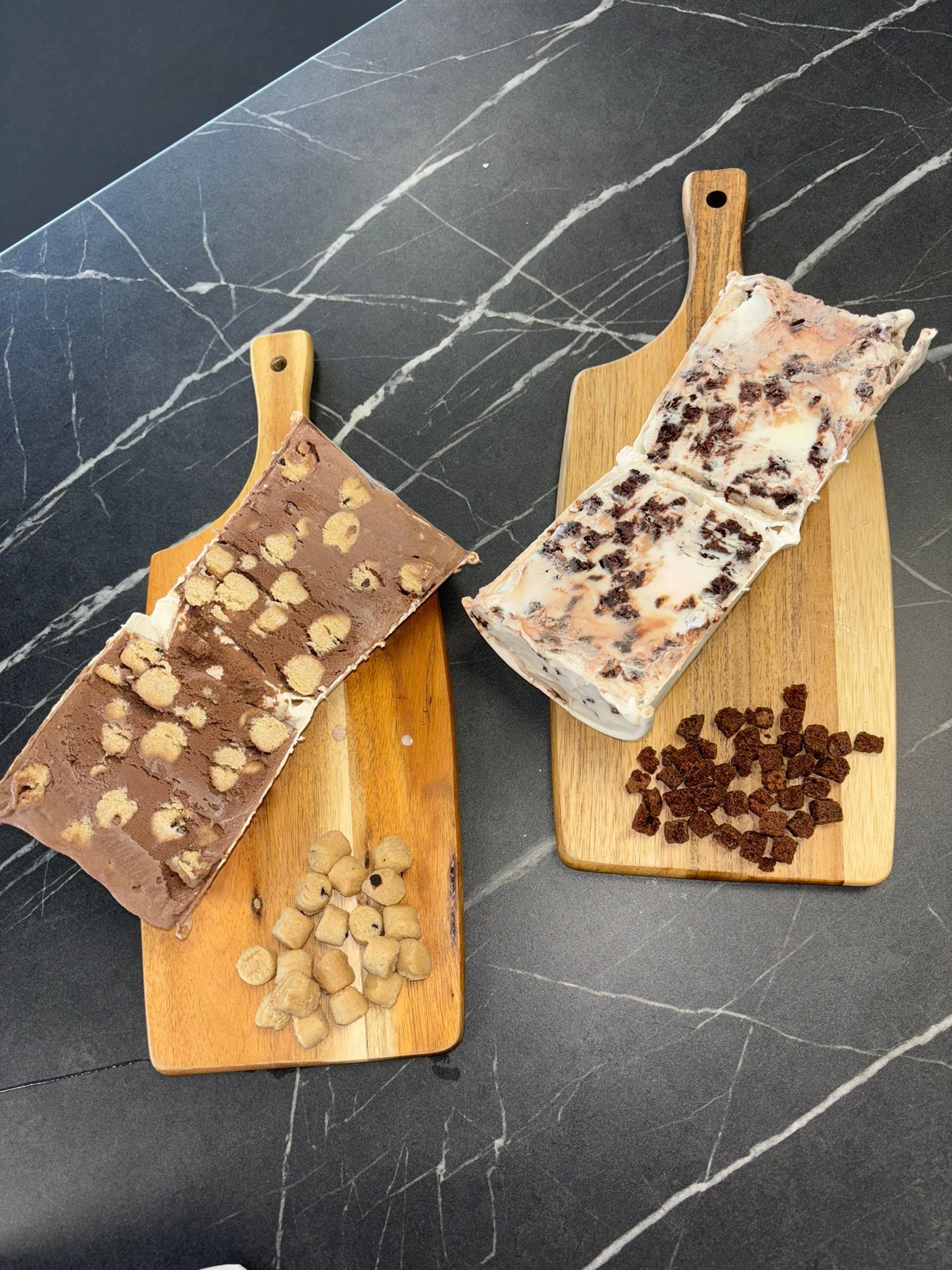Pecan Deluxe on navigating global supply chain challenges and creating confectionery for every taste

The IFE Manufacturing team were recently over the moon to spend a day with Pecan Deluxe, gaining an insider’s look at the challenges and opportunities faced by a global confectionery supplier.
From navigating complex international regulations and language barriers to responding to diverse consumer dietary needs, the Pecan Deluxe team shared valuable insights into how they develop innovative products that appeal to taste buds around the world.
Between trying a range of delicious products, the team sat down with Senior Development Technologist Richard Fox to learn more about how the business operates.
What are some of the challenges & opportunities that come with being a global confectionary supplier?
We have to understand the needs of each individual country or continent in order for us to develop recipes accordingly. Each country may have their own legal and nutritional requirements for raw materials and finished products that they need to adhere to, for instance fortified wheat flour is a requirement for baked goods in the UK. In addition, there is the challenge of reaching international customers in terms of marketing, for example how to make sure our website is found by customers and NPD professionals in countries outside the UK. We also have to pay attention to packaging and labelling with different language requirements.
Post Brexit, we’ve found solutions & overcome obstacles to distribute samples and product orders throughout the EU, so our customers continue to enjoy the super-fast service levels they have come to expect from Pecan Deluxe.
From our experience different countries may have different preferences for flavours, colours and textures. These maybe communicated in a customer brief and may often be observed in social media too. As a business we can adapt our development towards particular tastes e.g. extra salt or regional flavours. Being a global confectionery supplier we are in the unique position to be able to develop recipes that meet for instance a Scandinavian food trend, and then share them with customers in other parts of the world. So, it's kind of like passing an inspirational food baton across the world.
How important is it to develop products for different consumer dietary requirements?
Our products are usually used as a component, often making up only a relatively small, but transformational percentage of the ultimate product. We are in essence in the business of manufacturing indulgent & often sweet treats and our customers typically don’t require us to dramatically modify ingredients from a health perspective. We are able to adjust sugar & salt levels, and incorporate gluten, egg or dairy free options. which have become a significant part of our development portfolio. In addition, we are adept at creating products which meet the needs of vegan, Kosher & Halal diets.

How do you work with raw materials?
From an NPD perspective, raw materials always have to be thought about in terms of how they perform in the end product, throughout customer production processes and during shelf life. Testing and trialling ingredients is key throughout the course of development, factory production and beyond. When sourcing new raw materials, we need to establish whether accreditations such as Fair Trade, RSPO, Rainforest Alliance, Halal & Kosher are needed, plus our suppliers must be GFSI accredited.
At Pecan Deluxe we develop & manufacture a wide variety of confectionery items from brownie pieces to cookie dough and popping candy to mini filled chocolates. Therefore, our ingredients need to be appropriate for a variety of different processes – a flavouring that works in a confectionery coating may not be suitable for a baked item for example as it may not be heat stable.
We use a range of natural colours and flavours, familiar kitchen cupboard ingredients as well as innovative raw materials when needed, to deliver quality tasty and fun products.
What is the secret to effective creative collaboration with your clients?
Clear communication is really important to gather interest, share information, brainstorm & spark new ideas. We aim to build relationships & trust, working together with our clients as part of a greater team. We look at it from the perspective that we don’t just have teams within Pecan Deluxe, we build teams with our suppliers, our customers, everybody in the chain. Everything that we do is a two-way street, so communication is the key to everything.
We’re also flexible in our approach and we have the ability to turn things around quickly, so if a new trend or idea comes along, we can adapt and produce something swiftly. This is important in the fast-changing world of food and gives our clients the confidence to trust us with their creative ideas & come back again and again

Which products or flavours have been particularly popular lately, and why do you think that is?
Recently we've had a lot of interest in churros and donut style pieces. Also, products that provide not just unique flavours but a combination of factors - for example blends of flavours, textures and colours, maybe with an extra special added element. Popping candy is an example of this – providing a unique mouth feel with a really special dynamic. We’re seeing customers branching out more and being a little bit more experimental than they have done previously.
Obviously, the Dubai chocolate trend has been talked about a lot recently & we have come up with various approaches to this. Bubble gum flavours and sour sensations have been popular for a while and sour apple has proved very successful recently. We like to take the initiative and research new flavours & products so that we can propose new concepts for our customers, not just wait for them to come to us. We work on a lot of innovations & hold brainstorming sessions in order to develop different ideas that we then take out to the outside world and see how they are received.
How do you stay on top of new trends in product development?
We work very closely with our suppliers and our customers, & their knowledge helps us to discover and react to new trends that we might spot in the market. Pecan Deluxe is an international business with sites in the USA and Thailand, so we’re very much in touch with our colleagues and businesses throughout the globe who keep us abreast of any new craze that might be heading our way. Social media is another great way to keep abreast of trending and emerging food concepts – from consumer to industry level. We all take the time to stop & take note of anything new we might see, for instance whilst we’re out shopping, on holiday or eating out - not just in the development team, but everyone in the business.
The key is to be alert and receptive to everything around us – inspiration can come from anywhere!
)
)
)
)
)
)
)
)
)
)
)
)
)
)
)
)
)
)
)
)
)
)
)
)
)